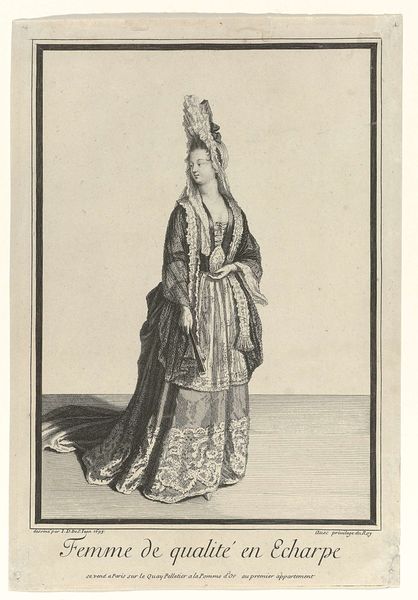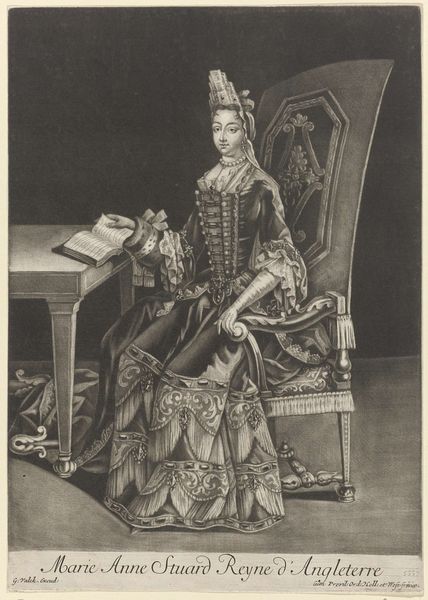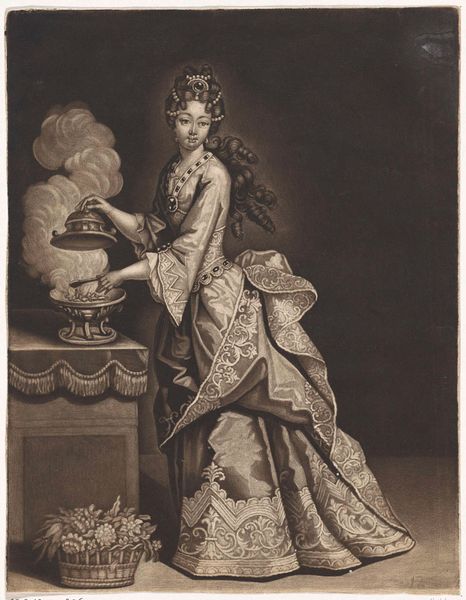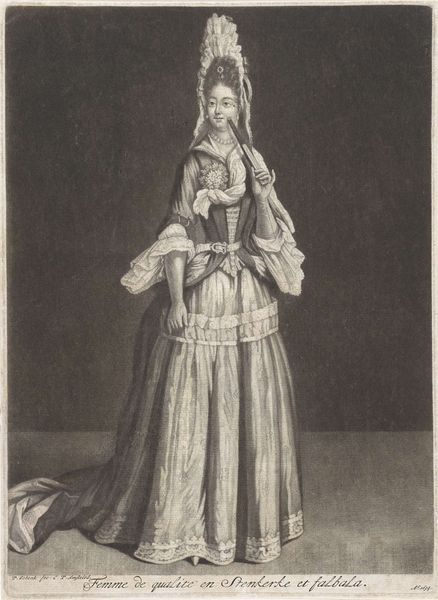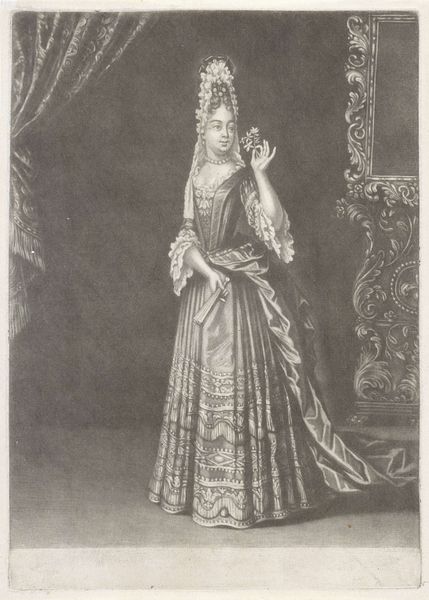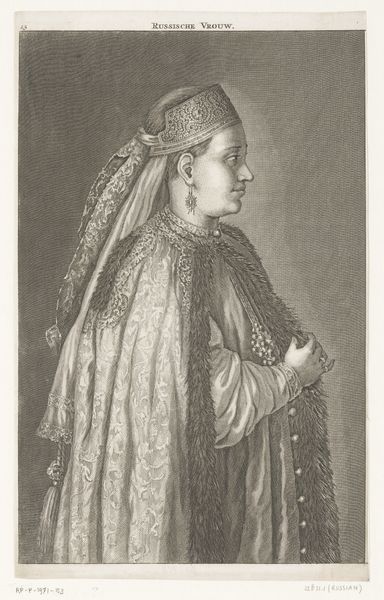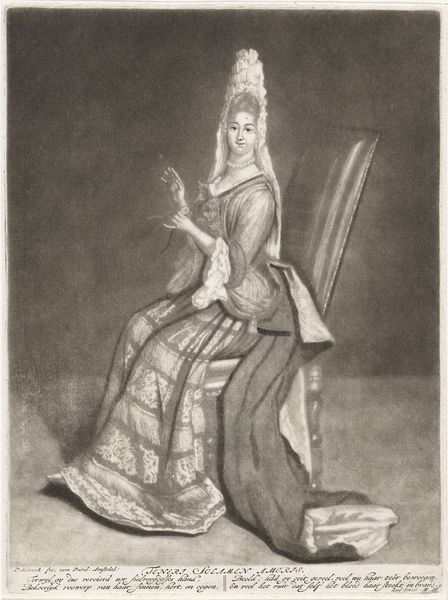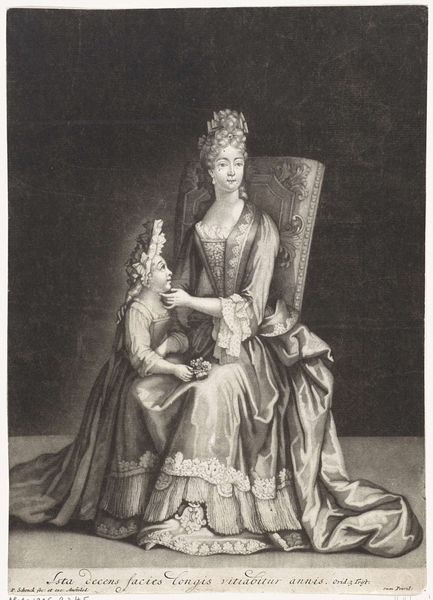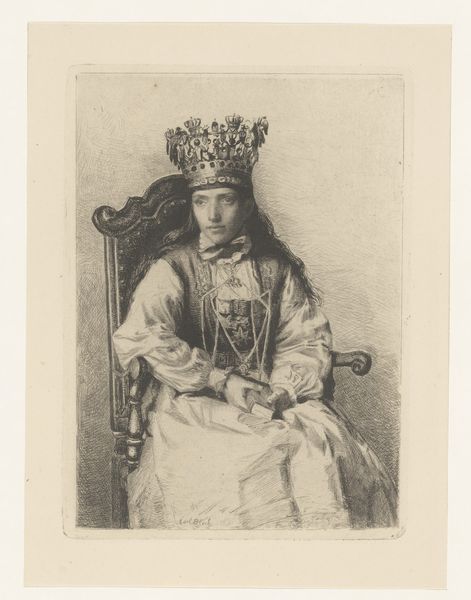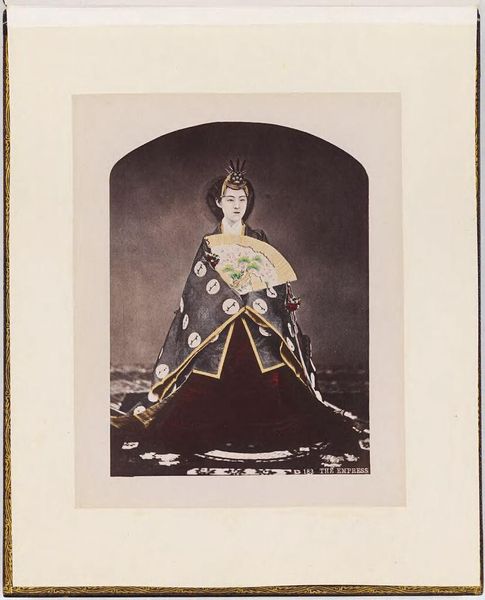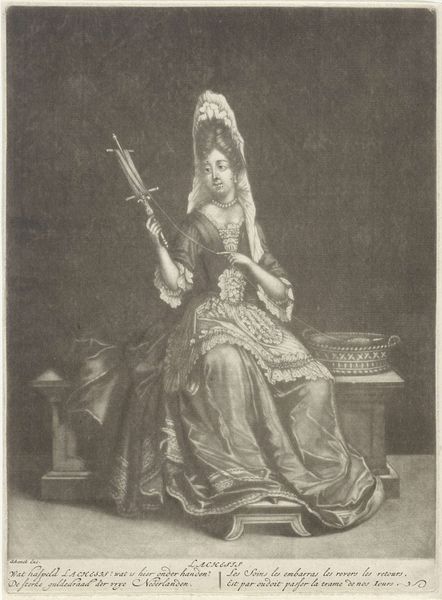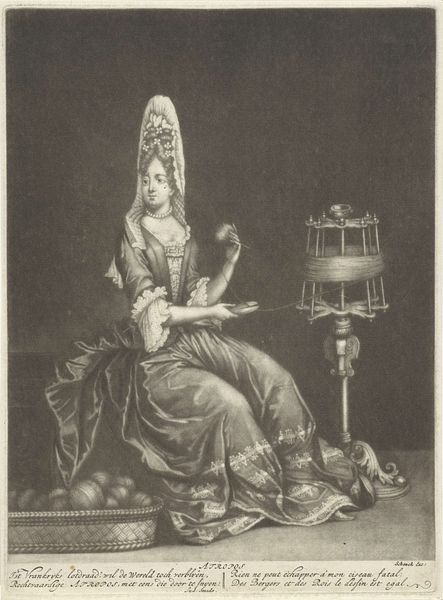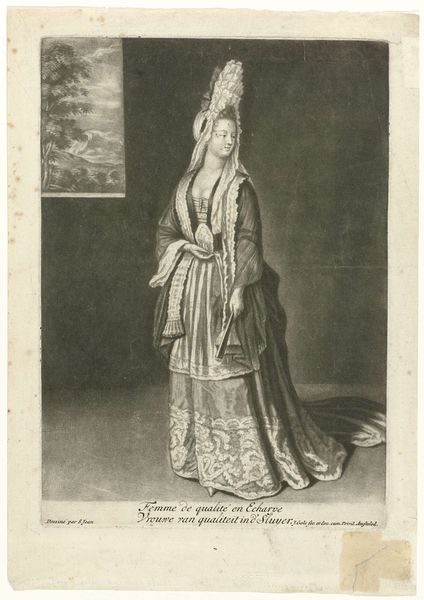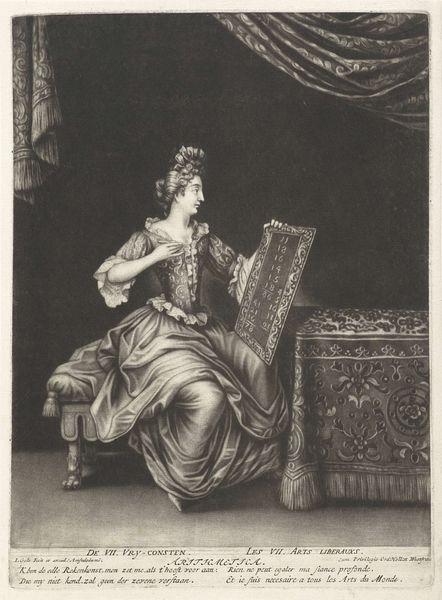
engraving
#
portrait
#
baroque
#
genre-painting
#
graphite
#
dress
#
engraving
Dimensions: height 252 mm, width 179 mm
Copyright: Rijks Museum: Open Domain
Curator: Here we have Jacob Gole's "Lady at her Dressing Table," dating from before 1724. It’s currently housed at the Rijksmuseum. As an engraving, it gives us insight into the dissemination of imagery in the Baroque era. Editor: It's striking how this piece plays with the concept of presentation and artifice. I’m immediately struck by the sheer volume of the lady's attire and hair, it’s almost theatrical. Curator: Absolutely, and that theatricality speaks volumes. The Baroque era, and especially genre painting of the time, was often deeply concerned with performance. This print shows a lady seated at her dressing table, surrounded by the accoutrements of beauty, holding up her index as if she is a teacher to her peers in etiquette. But more than showing, isn’t it performing for us? Editor: That performative element, and indeed its inherent self-awareness of itself, begs so many questions. Whose gaze is she preparing for? Is it primarily a social function or is it one of the male gaze too, considering who had access to these prints? Curator: An important intersectional angle. Given that engravings like these were widely circulated, the performance aspect is twofold. She's preparing for immediate social interactions but also engaging in a more long-lasting performance, her beauty is enshrined for all of posterity by the piece of printed matter itself. Editor: The black and white also abstracts a kind of neutrality of identity, which is curious given all this pomp around beautification and societal value based on such performance. Curator: It neutralizes some details but reinforces others. The very sharp, clear lines that form her voluminous hair and dress are thrown into stark contrast against the dark, ambiguous background. It emphasizes societal expectation, literally and figuratively pushing it forward. It makes the subject herself almost a prop for expectations! Editor: It's interesting to consider then, what those expectations reflect about gender and class at the time. Was beauty almost weaponized for ascension and social acceptance? Curator: I think that’s a perfect and painful description of her era. Gole's work offers a potent image, not just of aristocratic life, but of its inherent constraints and displays. Editor: Well, pondering the weight of those constraints really alters how I first perceived the piece. Thank you for illuminating its many layers! Curator: My pleasure! Art gives us not only historical snapshots, but hopefully space for reflection about identity itself.
Comments
rijksmuseum about 2 years ago
⋮
In the last quarter of the 17th century, fashion prints helped disseminate trends, most of which originated at the French court. Among those portrayed here is the fontange, a towering headdress with several tiers of ribbons and lace. To complete her look, the woman applies mouches (flies) to her face. These artificial beauty marks helped conceal blemishes and scars.
Join the conversation
Join millions of artists and users on Artera today and experience the ultimate creative platform.
